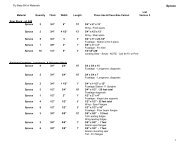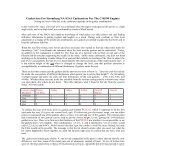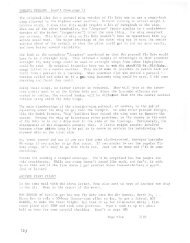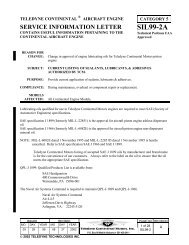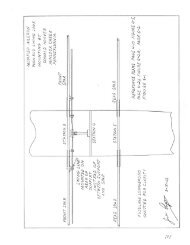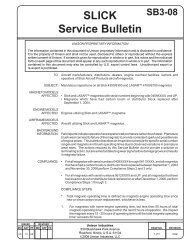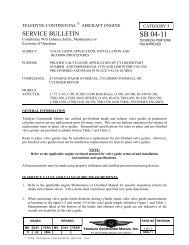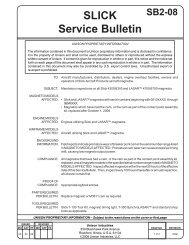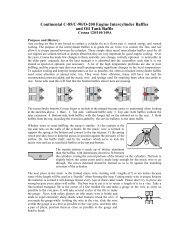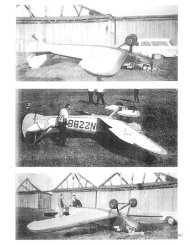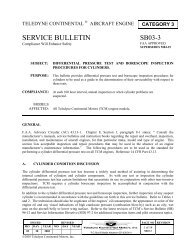You also want an ePaper? Increase the reach of your titles
YUMPU automatically turns print PDFs into web optimized ePapers that Google loves.
WELCOME to the world-wide family of FLY BABY builders.<br />
THIS IS THE 10th printing of the plans document, from which nearly 300 examples have been<br />
completed and flown in the United States and several foreign countries to this date.<br />
<strong>The</strong> first printing was in February, 1963, and succeeding editions have incorporated minor<br />
corrections and clarifications to the plans as they have been pointed out by the readers.<br />
Photographs of individual variations have been added, along with reprints of SPORT AVIATION<br />
articles, to give potential builders the benefit of others’ experience with their FLY BABIES.<br />
Further safety information was added by pages 8-32 and 8-33 to the Ninth Edition in 1982 and<br />
has been revised for this edition.<br />
In all of these years, there has been no evidence of structural short-comings in the design or a<br />
need to publish “fixes” to correct unsafe conditions. <strong>The</strong> recommendation for the rear spar carrythrough<br />
reinforcement on <strong>Page</strong> 9-9 is just that - not a requirement. <strong>The</strong> original FLY BABY has<br />
flown over 1400 hours since 1960 without it.<br />
Accidents and their causes are discussed in the SPORT AVIATION reprint starting on <strong>Page</strong> 8-29,<br />
but one more should be mentioned. A new owner bought a used and out-of-license FLY BABY and<br />
had a wing come off in level flight. It turns out that the airplane had been tied outside for a couple<br />
of winters in Florida. Trapped water in the fuselage rotted out some of the lower structure to the<br />
point where the rear spar pins pulled out of the spar carry-through under load. <strong>The</strong> new owner<br />
had not even inspected the long-unused airplane for condition before flying it. Further, nothing is<br />
known of the adequacy of the original varnish applications or the bottom drains that are specified<br />
in the plans for the specific purpose of avoiding water damage.<br />
This unfortunate event is mentioned here only to emphasize the importance of vigilant<br />
maintenance to any airplane, homebuilt or otherwise, and the need to keep it in good condition -<br />
and legal.<br />
Peter M. Bowers<br />
Seattle, Washington<br />
January 1, 1985<br />
B



